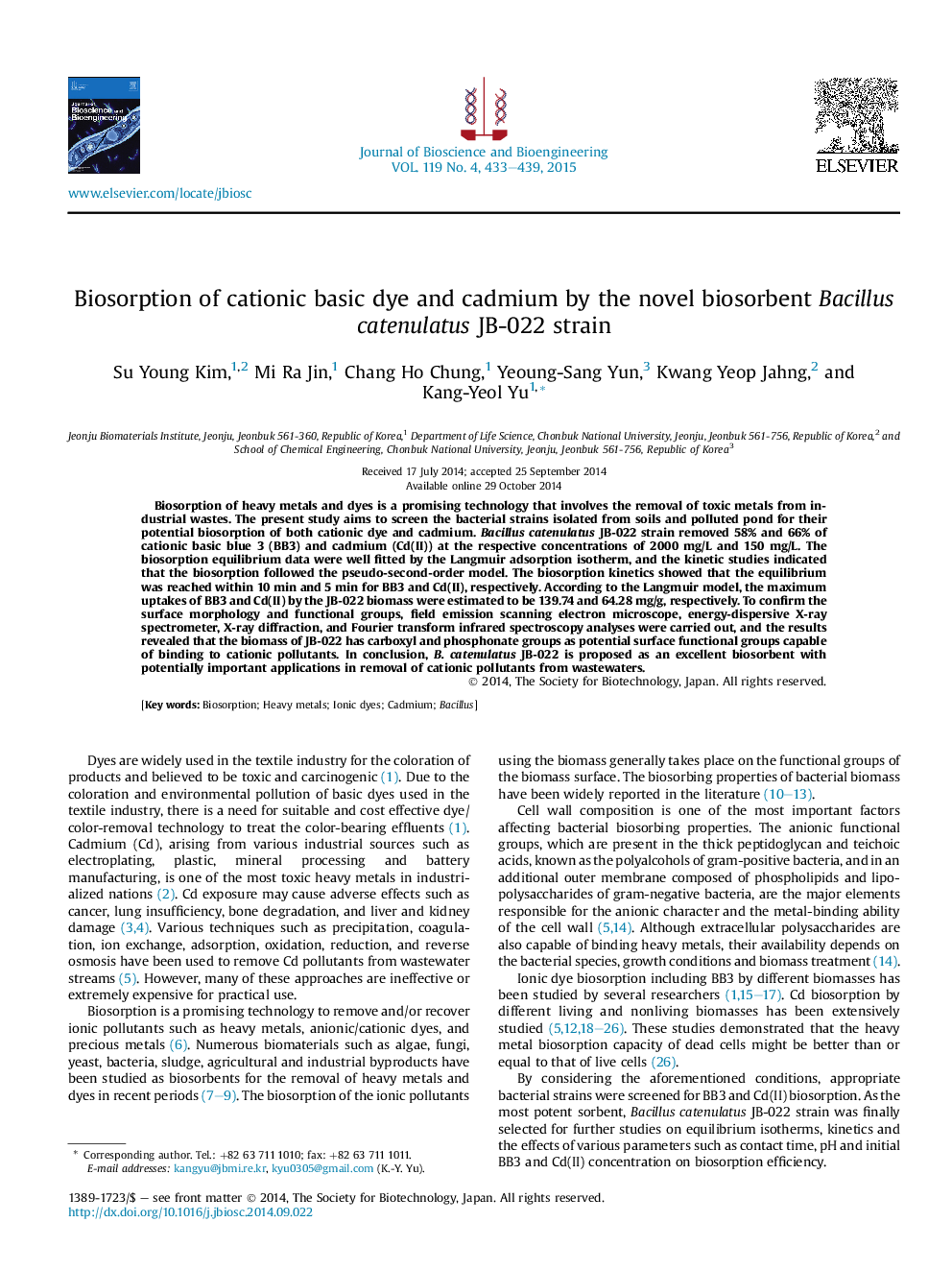| Article ID | Journal | Published Year | Pages | File Type |
|---|---|---|---|---|
| 20232 | Journal of Bioscience and Bioengineering | 2015 | 7 Pages |
Biosorption of heavy metals and dyes is a promising technology that involves the removal of toxic metals from industrial wastes. The present study aims to screen the bacterial strains isolated from soils and polluted pond for their potential biosorption of both cationic dye and cadmium. Bacillus catenulatus JB-022 strain removed 58% and 66% of cationic basic blue 3 (BB3) and cadmium (Cd(II)) at the respective concentrations of 2000 mg/L and 150 mg/L. The biosorption equilibrium data were well fitted by the Langmuir adsorption isotherm, and the kinetic studies indicated that the biosorption followed the pseudo-second-order model. The biosorption kinetics showed that the equilibrium was reached within 10 min and 5 min for BB3 and Cd(II), respectively. According to the Langmuir model, the maximum uptakes of BB3 and Cd(II) by the JB-022 biomass were estimated to be 139.74 and 64.28 mg/g, respectively. To confirm the surface morphology and functional groups, field emission scanning electron microscope, energy-dispersive X-ray spectrometer, X-ray diffraction, and Fourier transform infrared spectroscopy analyses were carried out, and the results revealed that the biomass of JB-022 has carboxyl and phosphonate groups as potential surface functional groups capable of binding to cationic pollutants. In conclusion, B. catenulatus JB-022 is proposed as an excellent biosorbent with potentially important applications in removal of cationic pollutants from wastewaters.
